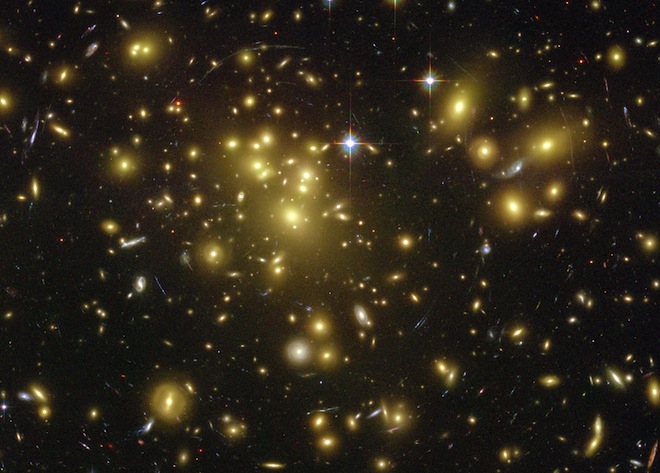Help discover dark matter in the universe, win money
November 5, 2012

Dark matter in the Abel cluster distorts light from distant galaxies (credit: NASA et al.)
Can you generate new algorithms to spot dark matter in Hubble images?
Observing Dark Worlds aims to capitalize on the ever-growing field of citizen science, where non-experts are asked to sift through data to help make discoveries, Wired Science reports.
Dark matter is thought to be a strange form of matter that doesn’t interact with electromagnetism and light, accounting for roughly 85 percent of the matter in the cosmos.
When a large amount of dark matter gathers in one place, such as the halo around a galaxy, it will exert a massive gravitational force. This field is so strong it can bend the path of light beams passing near it.
Astronomers have been able to infer the presence of many dark-matter agglomerations by looking for this distorted light, but they haven’t been able to find a technique that can unfailingly uncover dark matter in telescope images.
“We challenge YOU to detect the most elusive, mysterious and yet most abundant matter in all existence,” write the contest’s organizers on their website.
People or groups whose code best predicts the center of 120 test dark-matter halos will receive $20,000 in prize money, split three ways: First place will get $12,000, second will get $5,000 and third place will receive $3,000. The contest runs through Dec. 16.